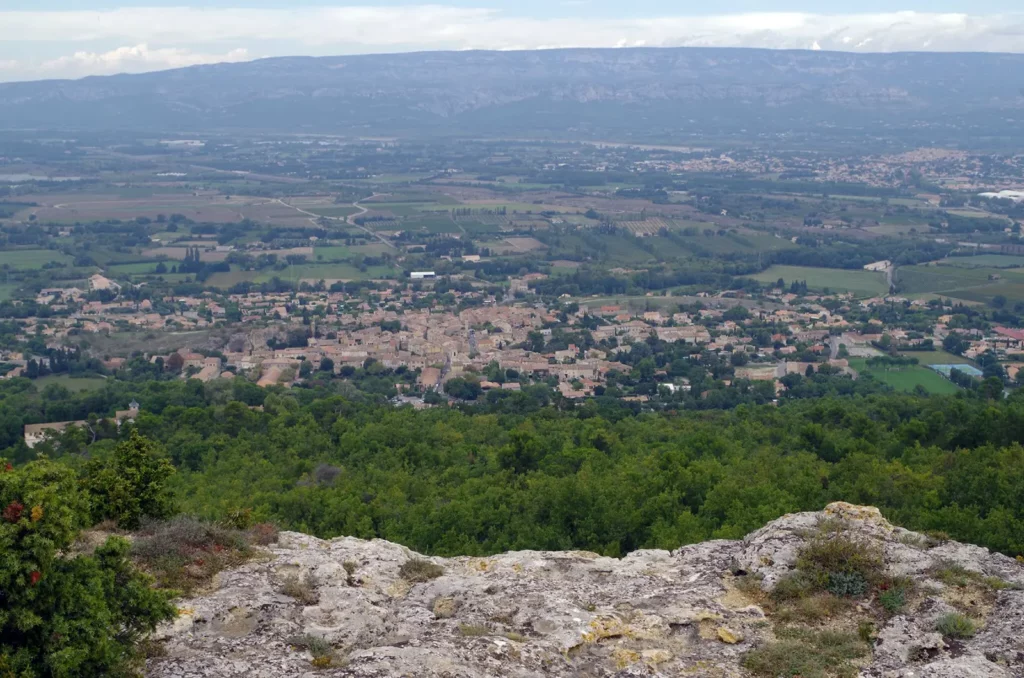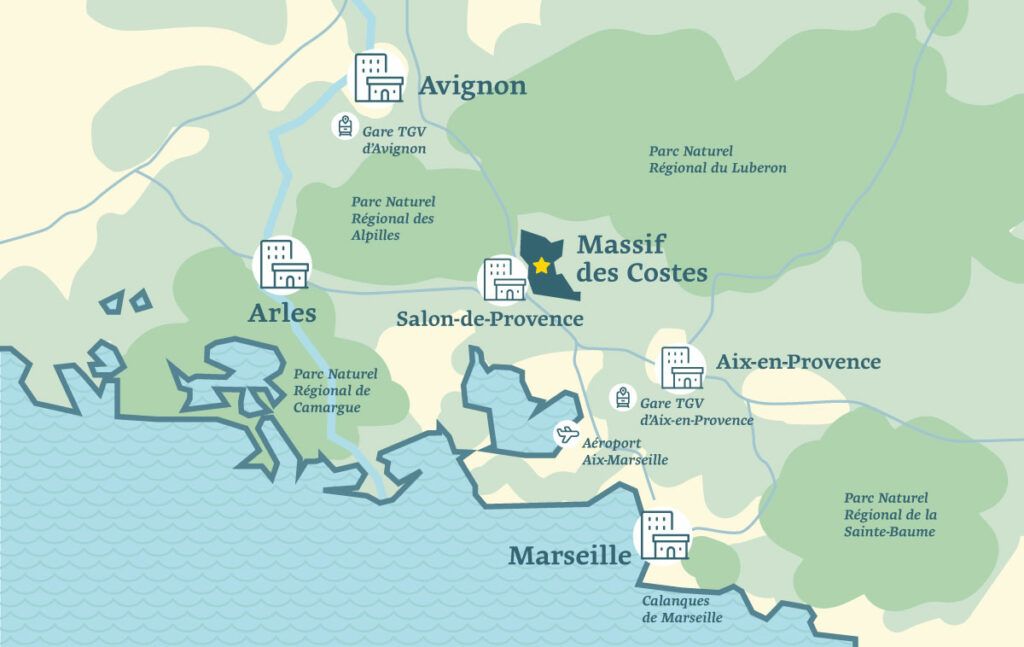Every year, on the 22nd of August, Vernègues hosts the pilgrimage of St. Symphorien.
Symphorien was a young Gaul from Autun, born in 160 AD. He received a religious education. However, in 180 AD, the Romans occupied the region, and it became forbidden to practice Catholicism. Symphorien refused to prostrate himself before Cybèle, a Roman goddess of fertility who was honoured in Autun.
Subsequently arrested, judged, flagellated, and imprisoned, Symphorien faced decapitation after a second trial on the 22nd of August, 180 AD.
His story resonated throughout Gaul, and there are many relics in Provence, notably in Arles, Caumont, Eyragues, Lambesc, and Vernègues.
The first pilgrimage was in the 6th century, initiated by St. Virgil, the Archbishop of Arles who was previously the Bishop of Autun. Since the 13th century, St. Symphorien has been celebrated throughout Provence, particularly in Vernègues. By the late 15th century, he was hailed as a healer. Many people from other villages came to pray to him and seek protection.
The pilgrimage attracts many pilgrims. It starts a few days before the 22nd of August with a novena. In 1644, Charles de Valois, Duke of Angoulême and son of Charles IX, came to participate in the novena.
From the 17th century, the friary of Marguilliers organized the pilgrimage and oversaw the finances of the parish. They harvested the wheat to make the hosts, grapes to make the wine for the masses, and olives to make the oil for the saint’s light. They also collected donations during the service. This friary disappeared during the Revolution.
The pilgrimage resumed between 1874 and 1879, with banners being given out. Rain was often requested from St. Symphorien in this dry country.
In 1876, the Canon of Bourgues from Aix composed a canticle about umbrellas. The canticle aimed to show St. Symphorien that the population came with an umbrella as a sign of the trust they had in him. That year, it rained a lot, and pilgrims didn’t know where to seek shelter!
In 1935, an association called “The Friends of St. Symphorien” was created. At that time, religious celebrations and popular festivities were intertwined. On one hand, there were liturgical celebrations (vespers, mass, processions with the relics, and canticles), and on the other hand, there were bonfires, dances, and songs. The vicar of Vernègues didn’t agree with these festivities and called it a profanation. He threatened the pilgrims with excommunication.
Similar events existed in Grans, Lambesc, and Eyguières. But this is one of the last pilgrimages of the deanery.
Today’s Pilgrimage in Vernègues:
Today, St. Symphorien is prayed to mostly for rain, but he has always been considered a healer, which is why there are many crutches in the chapel.
In Provence, prayers ask for protection from drowning and the rising waters of the Rhône and Durance rivers.
Before 1909, for a few months during the year, the golden statue of St. Symphorien made of wood with his head in his hands was conserved in St. Jacques Church of Vernègues and in Notre-Dame de Lourdes, the new church of the parish. Today, the statue is in St. Symphorien Chapel, but the day before the pilgrimage, the statue is prepared for the big day in the church of Vernègues.
During the celebration, the statue is a magnificent testament to the power of this Saint. The statue is under a canopy and brought to the chapel with pilgrims and curious onlookers surrounding it.
The procession begins at 4:00 PM with a first stop at the oratory of Vernègues. Then, pilgrims proceed to the chapel located in the hamlet of Cazan at 5:00 PM.
The procession continues to another oratory 300 meters away, with a cross at its pinnacle. Finally, the statue is placed in St. Symphorien Chapel. The day concludes with a Mass in French and Provençal, followed by a picnic.



